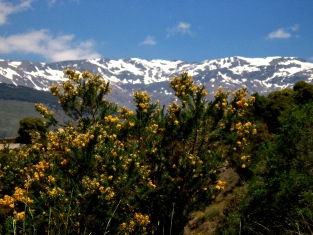 Near Granada lie mainland Spain's highest peak - Mulhacén, which rises to a height of 3478 metres and forms part of the Sierra Nevada mountain range, capped in snow nearly year round. Extending approximately 75 km. from east to west it crosses from Granada into Almeria province and towers above one of Spain's most picturesque corners - Las Alpujarras or La Alpujarra.
Near Granada lie mainland Spain's highest peak - Mulhacén, which rises to a height of 3478 metres and forms part of the Sierra Nevada mountain range, capped in snow nearly year round. Extending approximately 75 km. from east to west it crosses from Granada into Almeria province and towers above one of Spain's most picturesque corners - Las Alpujarras or La Alpujarra.
Las Alpujarras Granada
Steep sided ravines tumble toward the sea from the high Sierra with clear mountain streams and rivers at their feet feeding orchards and woodlands. Picture postcard villages cling precariously to the valley sides; clusters of white washed sugar cubes where narrow streets are flanked by ancient walls harbouring the secrets of centuries.
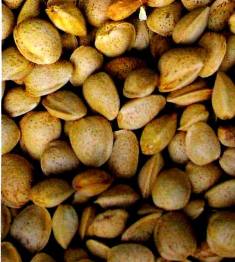 Las Alpujarras history
Las Alpujarras history
Although over the last decade or so, the Alpujarras have seen a rise in tourism, the region still remains a delightful corner of Andalucía and one is never very far away from complete tranquillity and solitude. It has become popular for hikers, bikers and climbers as well as an ever-growing number of ex-patriots looking for a slice of the quiet life which the locals have enjoyed for hundreds of years.
The seventy or so villages scattered throughout the valleys are kept watered throughout the driest of summers by the melt flowing from the ever present snow and in turn these rivers have deposited fertile soil on the lower hills where terraces cut high into the ravine sides are thought to be the work of the Visigoths or Ibero-celts, begun nearly 2,000 years ago.
It was the Moors however, in the 10th and 11th centuries that brought the area into prominence. Silk was produced, the little mulberry-leaf-eating caterpillars of the silk moth spinning their cocoons and supplying silk thread to the workshops of Almeria. Later, silk produced in the Alpujarra represented an important chunk of Nasrid Granada's wealth. With successful irrigation and agriculture, the production of silk supported an Alpujarra population of over 150,000 in at least 400 villages and hamlets by the late 15th Century.
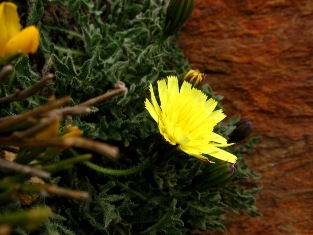 Granada revolt
Granada revolt
The Alpujarras were at the centre of many a bloody revolt when Fernando and Isabel finally took Granada. Over 1500 Muslims rebelled but were eventually overcome and were forced to convert to Christianity. These Morocco’s, as they became known, continued to repel new, repressive decrees which banned the use of the Arabic language and dress for example but eventually nearly all were shipped off as labour to other parts of Andalucía and around 270 villages were re-peopled with settlers from Northern Spain. The others were left to crumble into the earth and over the following centuries, the silk industry too, crumbled into non-existence.
Las Alpujarras today
Today the Alpujarra is thriving once more. Visiting for several days recently, a friend and I based ourselves in Bubión, situated in the high Alpujarras and one of three villages clinging to the sides of the Barranco de Poquiera. Bubión, Capileira and Pampaneira are well on the tourist circuit now and deservedly so as they are breathtakingly beautiful. The Poquiera ravine cuts its way from the snow-capped peaks of the Sierra Nevada and the three little villages bedecked in flowers seem about to tumble into the depths below. Like most of the villages throughout the Alpujarra, the villages are still as the Berber settlers built them; two storey houses with characteristic flat roofs and stumpy chimney pots. For centuries, Alpujarran roofs have been constructed using launa, a crumbly type of clay found throughout the region, packed onto flat stones which have been laid over beams of ash or pine. Bizarrely, the launa is only laid on a waning moon and never on a Friday in order for it to settle properly and therefore become waterproof - this maxim, although seemingly superstitious has been observed for generations.
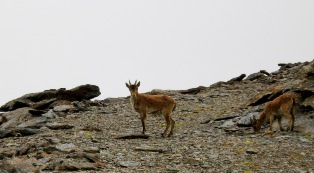 Poquiera gorge Mountain Villages
Poquiera gorge Mountain Villages
The mornings are particularly beautiful in the Alpujarra. From our window, I gazed down into the valley where wisps of morning mist still lingered and a watery moon hung low over the opposite side of the ravine. The deep green of the pine forests contrasted wonderfully with the bright white of the villages as the first rays of the sun's light crept their way over the mountains. The Poquiera gorge is just one of the marked routes for walkers and one can walk right up to the peak of Mulhacén although this is a long climb. In summer, a road links Capileira, the highest of the three villages, to the ski station of the Sierra Nevada and the views on a clear day can stretch to the distant Rif Mountains of Morocco in Africa and Gibraltar in the west.
Trevalez village
Another village to start your ascent to the summits is Trevalez, said to be the highest village in all of Spain (it isn't in fact, although the municipality certainly is as it incorporates Mulhacén). Set in a natural cleft of a mountainside, Trevalez sits at an elevation of 1476 metres above sea level but has more that its height as a claim to fame. The village is famous for producing some of the best jamón serrano in the country and as you wander through the village, large buildings with slatted windows allow you to peak in at the hundreds of hams hanging to cure in the dry mountain air. There are hams everywhere, the smell permeating the air of Trevalez and it is an ideal place to stock up on this Spanish delicacy - there are plenty of places to sample the wares before you decide on your purchase.
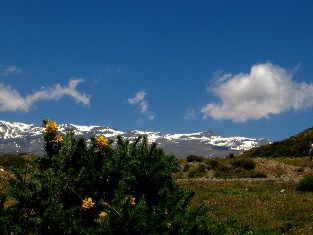 Fantastic local products
Fantastic local products
All across the Alpujarras you will see rugs. Many villages have small weaving workshops where you can visit and see the colourful cotton rugs being made and they are excellent value. Other locally produced good buys are the baskets hand woven from esparto grass, the excellent olive oil, cheese - especially the goats cheese stored in olive oil, soplillos (meringues flavoured with almonds), honey and its various derivatives including a rather tasty honey liqueur, many of the local product can you find on the weekly local markets Marbella Estepona Fuengirola and many other towns on Costa del Sol.
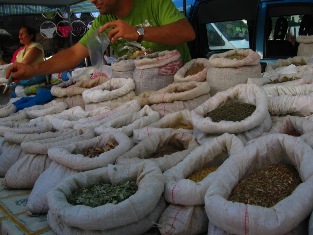 Mountain walking in Las Alpujarras
Mountain walking in Las Alpujarras
Walking has become really popular in the Alpujarra and there are several marked routes, all different lengths and catering to all abilities. We chose a walk that took us to an area known as La Taha. The villages of La Taha are less touristed than the three of the Poquiera gorge but just as beautiful. The name stems from the Muslim Emirate of Granada when the Alpujarra was divided into 12 administrative units called Tahas.
Today, five small hamlets make up La Taha, all located south of the larger village of Pitres. We drove down to the tiny village of Ferreirola and left the safety of our car, donned boots and set off on foot for Fondales. We walked through thick forests and emerged into fields of almond trees, all bursting with delicate pink blossom as the morning warmed up. Delicate mountain flowers carpeted the ground, many of which are only found here and as we walked, the church tower of Fondales rose up above the village almost in welcome. Like most of the villages in the region, the church is a good example of solid 16th century Mudéjar architecture.
As we walked into the village, we passed covered troughs with ridged sides where for centuries, before the advent of running water in the homes, women would meet to wash their dishes and clothes in the spring fed, communal wash-house. Here in La Taha, you can really see the workmanship of the roofs as many of the houses are linked by what are known as tinaos. These bridge-like structures provide shade and shelter beneath and many are used as terrao's or roof terraces also.
We stopped to tuck into platos de Alpujarra which comprise local jamón, chorizo (sausage), morcilla (black pudding) and my personal favourite; patatas a la pobre (which literally translates to "potatoes of the poor" and consists of potatoes fried in olive oil with onions and peppers). All simply delicious, especially if you have been walking up hill and down dale for hours! We took a final wander through the streets of Pampaneira, to buy yet more carpets and to admire the view of the upper Poquiera valley once more. Above us, the sparkling villages of Bubión and Capileira basked in the afternoon sunshine amidst the lush forests, and the snowy mountains higher still were backed by an azure sky. An image I will keep imprinted upon my brain until the next time I visit.